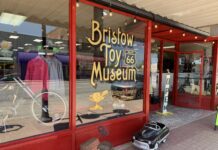The first thoughts of many a girl after she’s recovered from the excitement of having an engagement ring slipped over her finger are of pounds to lose and hair to grow.
It is a delicate game of timing to get precisely primped without the signs of irritation that come with waxing, toning and zapping yourself into perfection. Let’s face it. It hurts to be beautiful.
Three months before your wedding is not the time to try any thing crazy. But there are many options and plenty of time to lift, tighten, whiten and fluff in all the right places as close to 90 days before flowers are arranged, photos are taken and the string quartet strums the “Bridal March.”
Locks Of Love
Normal, healthy hair grows a quarter to half an inch a month, says Shawna Burroughs, a stylist specializing in wedding hair at Jerra Herron Salon. Growth can be stimulated with certain vitamins, massages and treatments, she says, but a bride should consider what length of hair she wants at least six months before the wedding. Then she should spend the three months before taking really good care of it. Burroughs suggests a trim every four weeks, eating healthy, not over processing with color and using good products.
“Three months is not time for an experiment,” says Burroughs. “It’s mainly just trying to get your hair back to its best health with treatments, etc.
“It’s all in good health and not stressing out,” she adds.
Extensions are an option for women who need a little boost. Burroughs can create a full head of long, flowing locks that will last four to six months, or tuck a just few extensions into an up-do.
Burroughs recommends that women who color regularly get a touchup seven days to two weeks prior to the wedding. Major color changes should be taken care of at least six months before the wedding.
Trial runs on the wedding day ‘do are a good idea. If all goes well on the first try, Burroughs says, book for the big day. However, a month before the wedding a second trial run scheduled on the same day as a dress fitting ensures the hair is exactly right.
Fit And Trim
Contouring and tightening treatments like Thermage can take six months, says Karen Weidner owner of Utica Square Skin Care Clinic.
That means toned arms and a flat belly are going to come from cutting back on cupcakes at wedding showers and hitting the gym.
“A lot of women are really afraid to lift weights. If you really want to make improvements, that is really what you have to do,” says Monique Washington, a certified personal trainer at St. John Siegfried Health Club.
You don’t even need a gym membership, Washington points out. Your body weight is resistance enough. Pushups, squats, crunches, arm dips and lunges hit all the areas that a woman would most like to be toned.
If you do have a gym membership, myriad options await you behind the weight room door.
“If you just do cardio, you’re just going to get a smaller version of yourself,” says Washington. “If you want muscle tone. You have to do resistance training.”
All Aglow
Two months before the wedding is a bride’s window for addressing her skin.
“I would do a corrective facial to remove impurities like any benign abnormalities, lumps, bumps, brown spots to even out skin tone,” says Weidner.
A corrective facial is specific to every woman’s skin, but might include microdermabrasion and dermaplaning to restore and correct skin. Weidner also makes sure the bride will not have an adverse reaction to any products that will be used to give her a final glow just before the wedding.
Laser fractional resurfacing two to three weeks before the wedding can give the skin a bright and youthful appearance. This is also a good time for a full body exfoliation or chemical peel to make the skin soft and create a smooth surface for a spray tan.
“Some brides like to do Botox and fillers,” Weidner says. “That is something you need to plan ahead for.”
She suggests three to four months to give it time to take full effect.
For the final blushing bride touch, plan a facial and brow wax a week before the wedding.
Say Cheese
Perfect hair and perfect skin need a perfect smile.
“With dentistry today, you can do pretty much anything in three months,” says dentist Chris Ward who specializes in cosmetic, implant and sedation dentistry.
Chipped or damaged teeth can be repaired. Gaps and crooked teeth can be aligned. Missing teeth can be replaced.
Ward advises allowing four weeks after dental work for swelling and irritation to resolve so a bride looks her best and can enjoy her day. Implant work should start three months ahead of the wedding. If laminates or veneers are needed to repair teeth, a bride should allow two months.
Teeth can be whitened in one office visit or in two to three weeks with a dentist prescribed at home process. A few days of tooth sensitivity often follows a bleaching treatment. Ward says bleach a month prior to the wedding to avoid sensitivity on the big day.






















